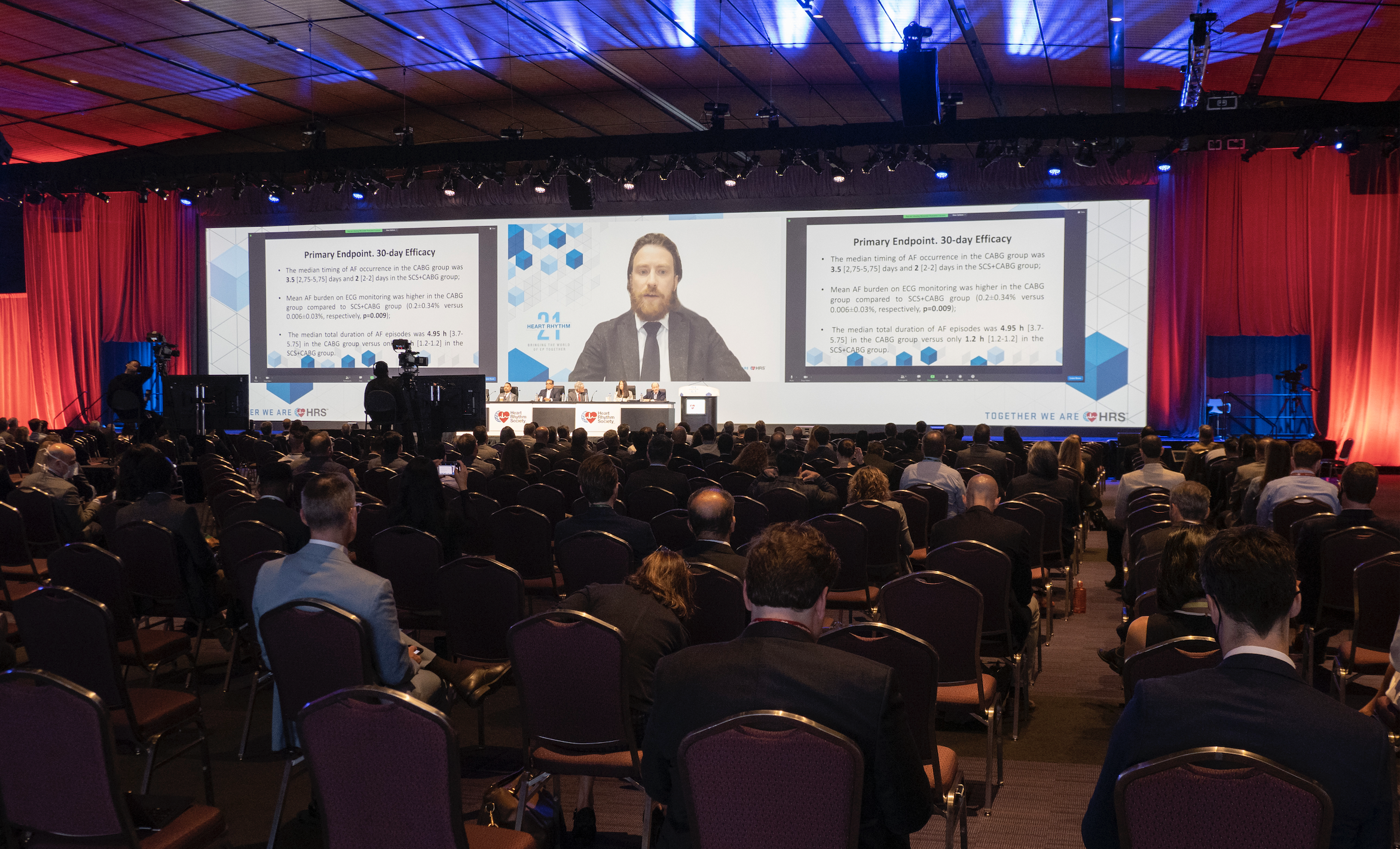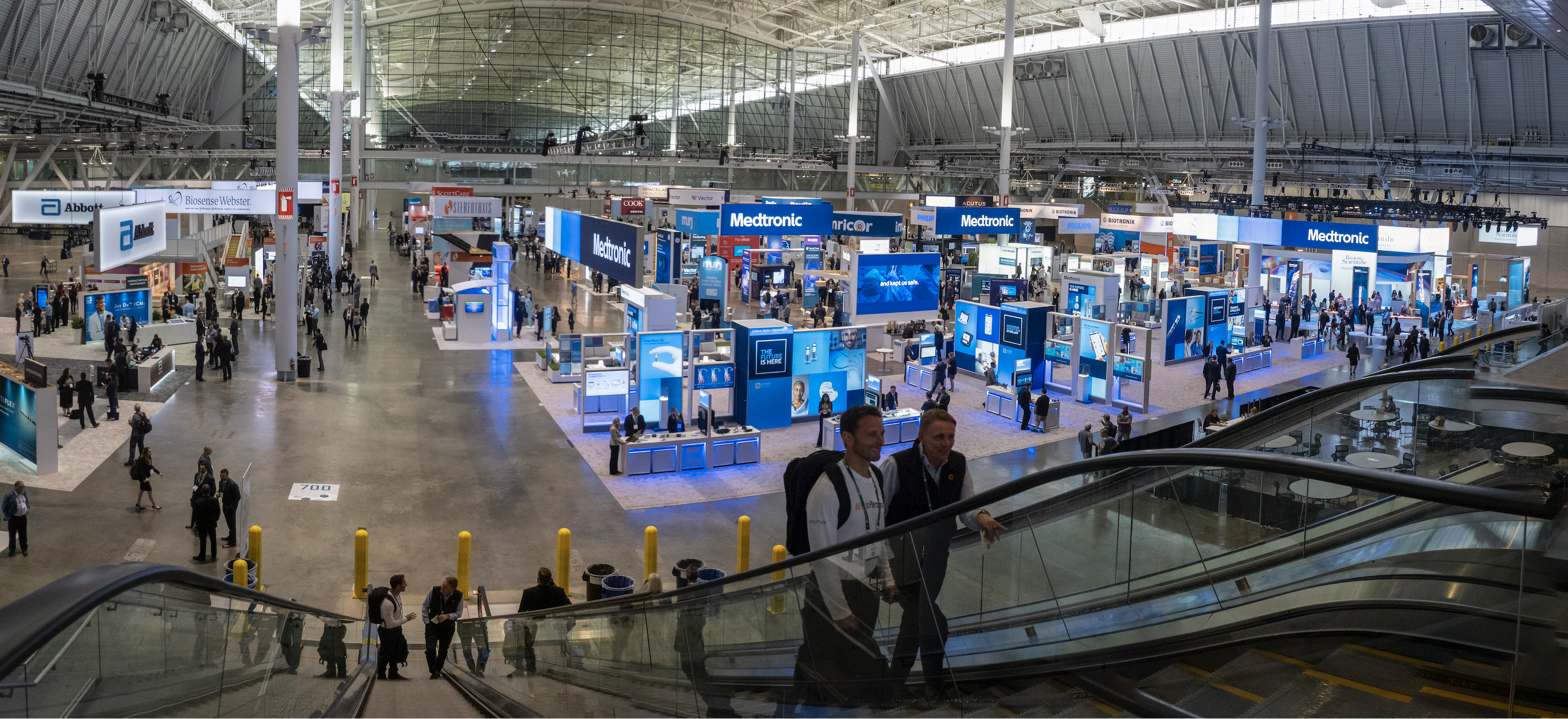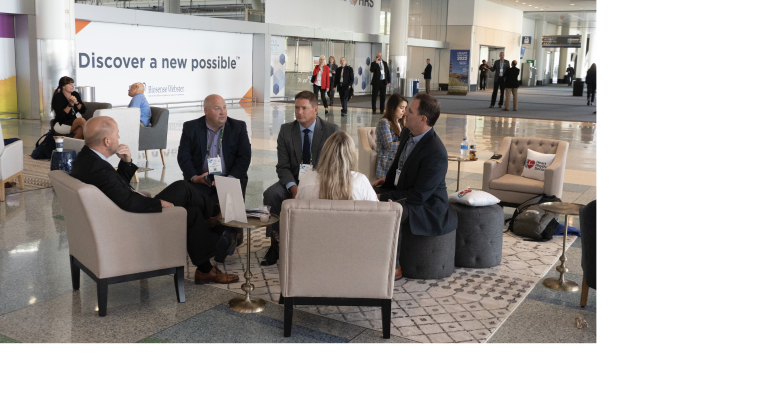After canceling its annual meeting set for May 2020, the Heart Rhythm Society offered several new virtual programs throughout the year on its online learning platform, Heart Rhythm 365. Those programs began rolling out at the same time the 2020 annual meeting was to begin, and over a few months included an abstract e-poster catalog, late-breaking clinical trial sessions, and the Young Investigator Awards session.
The association’s leadership knew, however, that there had to be a fully formed 2021 event—one scheduled for in-person but which accounted for potential Covid-related complications, while also being one that would leverage the audience reach of digital events.
As a result, HRS staggered its 2021 annual meeting across two mediums and three time frames: June 30 saw an all-day virtual program; July 28 to 31 saw an in-person program in Boston but with select session content, the innovation expo, and the abstract catalog available to virtual attendees; and September 1 will see another all-day virtual program.
Germaine Schaefer, associate vice president of meetings & events for HRS, spoke with MeetingsNet right after the in-person segment took place.
MeetingsNet: When did your leadership decide to do a three-part hybrid event?
Schaefer: We began envisioning the 2021 event almost immediately after having to cancel the 2020 edition. The multi-pronged hybrid approach was developed in part to allow our small staff to pivot to a fully virtual meeting if the situation hadn’t improved in time to do an in-person event. We looked at what we’d done in the past and what we’d been able to turn around in 2020 with only a six-week window. The multi-part hybrid model was developed from those learnings.
MeetingsNet: For the planning team, what was the toughest part of coordinating a staggered hybrid event?
Schaefer: Making sure our faculty understood the different due dates for their presentation content, and how their sessions would be presented. It was also challenging to navigate the changing travel restrictions and manage those effects on our 700-member faculty.
MeetingsNet: Which virtual platform did you use?
Schaefer: We worked with Freeman.
 MeetingsNet: Why did you decide to have plenary sessions each day instead of a single opening plenary session, like in the past?
MeetingsNet: Why did you decide to have plenary sessions each day instead of a single opening plenary session, like in the past?
Schaefer: After more than two years apart, we wanted to give our attendees a place to gather each morning to be inspired and energized for the day ahead. We are also in a transition to a new three-day weekend format for the meeting, and we used this meeting as an opportunity to change how we schedule the day overall.
MeetingsNet: How did you decide on which in-person sessions to cover on your five livestream channels on July 28 to 31?
Schaefer: Two of our channels were the content from Rhythm Theaters, which is the industry-education [sponsored] content. Knowing the in-person audience would be lighter than normal, we wanted to give additional exposure to our exhibiting companies’ content. Including the plenary room on livestream was a must, and for the other two session rooms the program committee looked at the bulk of our education and tried to schedule in a combination of sessions that would be interesting to the broader audience, but also sessions aimed at each of our various interest groups.
MeetingsNet: Did the abstract pavilion have different content for in-person attendees versus virtual attendees?
Schaefer: In-person attendees had the opportunity to watch live presentations and ask questions of pavilion presenters. But those presenters could upload a five-minute presentation along with their static poster so that virtual attendees accessing the e-poster catalog can listen or just peruse the 700-plus abstracts.
MeetingsNet: How did you price the virtual-only experience versus the in-person experience with virtual access?
Schaefer: We held our rates the same for the in-person/virtual combo as our in-person pricing in previous years. The virtual-only attendees had a discounted rate of about 40 percent from that figure.
MeetingsNet: What was the attendance for the first two segments of the event?
Schaefer: Since everyone had virtual access, our total attendance was over 4,200, with 2,400 of those attending in person too. We’ve seen steady participation in the virtual platform since the launch, with more traffic over the days of the live meeting, naturally.
 MeetingsNet: Is the cost of doing a three-part event about the same as doing your typical in-person annual event, or is it much different?
MeetingsNet: Is the cost of doing a three-part event about the same as doing your typical in-person annual event, or is it much different?
Schaefer (pictured here): As planners well know, the cost for audiovisual doesn’t change much regardless of the number of people in the audience. We were able to see cost savings in some items from the smaller audience (food and beverage costs, items purchased for distribution, etc.), but the cost of the virtual platform and the digital infrastructure to make it happen added about 20 percent to our overall costs.
MeetingsNet: Did in-person attendees say they felt safe and comfortable in the in-person setting?
Schaefer: A very high percentage of our audience was vaccinated, as they are almost all working in hospital settings. As a result, they were comfortable being among their peers in our socially-distanced settings. We did offer them the choice of lanyard colors to indicate their comfort with being close to other people. Staff and vendors wore masks during the event, and our branded masks were a popular giveaway item.
MeetingsNet: Would HRS consider using this event format again for the 2022 edition, or perhaps scale back the virtual components if in-person gatherings are back to normal by that time?
Schaefer: We are currently working with our program committee on what our event will look like for 2022. The 2021 meeting was set up before there was any vaccine, and there was a strong fear that we’d have to cancel. But now with multiple vaccines and the economy and travel re-emerging, we won’t need the same type of event for 2022. Nonetheless, HRS has made digital education part of its strategic plan moving forward, so it will be part of our future annual meetings in some shape or form.






